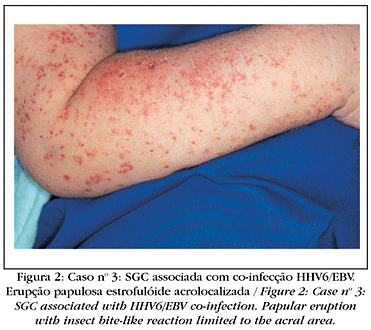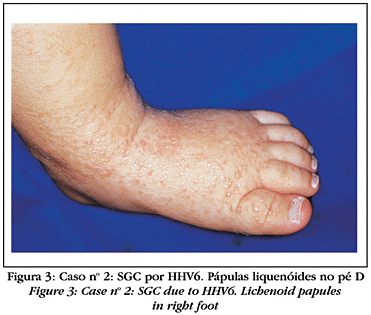BACKGROUND: Gianotti-Crosti syndrome (GCS) is a rare, self-limited disease characterized by a symmetrical erythematopapulous, acral-based eruption. In most cases a definite relationship with a viral infection can be established, especially when hepatitis B or Epstein-Barr viruses are involved. However, few case reports on associations between GCS and human herpesvirus 6 (HHV6) have been published to date. OBJECTIVE: To study clinical and laboratorial aspects as well as to investigate the role of viral pathogens in the etiology of GCS cases from Belem (PA), Brazil. PATIENTS AND METHODS: From August 1996 to December 2002, ten children with a clinical diagnosis of GCS were investigated through routine laboratory exams and serologically screened for several virus specific antibodies. A diagnosis of GCS was considered for cases that presented clinical aspects considered suggestive, together with one or more of the following criteria: elevated titers of hepatic enzymes, lymphocytosis, positive viral serology or history of a prior vaccination. RESULTS: Six out of 10 children (60%) showed evidence of HHV6 primary infection, as demonstrated through specific IgM-antibody positivity. CONCLUSION: Anti-HHV6-IgM antibody positivity in 6/10 patients suggests that the pathogen can play a role in the etiology of GCS. Consequently, the authors recommend that this virus is added to the routine serological tests when exanthematous processes are concerned, especially those with a morphology suggestive of GCS.
acrodermatitis; hepatitis C antibodies; exanthema; herpesvirus 6, human







